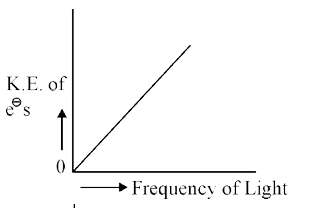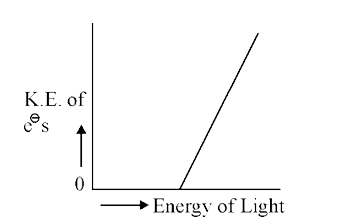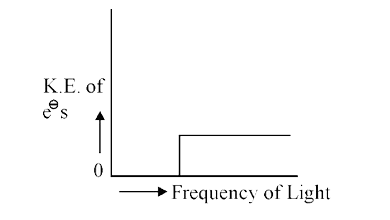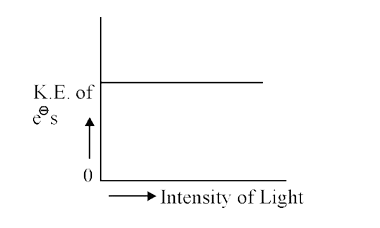Relationship between incident light and CO2 fixation rate is
Sigmoid at higher light intensity
Linear at low intensity of light
Not affected if the available intensity is below the saturation
Linear at high light intensity
To analyze the relationship between incident light and CO2 fixation rate, we can break down the process into several steps:
1. Understanding Photosynthesis: Photosynthesis is the process by which green plants convert light energy into chemical energy, using carbon dioxide (CO2) and water (H2O) to produce glucose and oxygen (O2). The rate of photosynthesis is influenced by several factors, including light intensity.
2. Graph Analysis: When we plot a graph with light intensity on the x-axis and the rate of CO2 fixation (photosynthesis) on the y-axis, we observe that the relationship is not linear throughout. Initially, as light intensity increases, the rate of CO2 fixation also increases.
3. Initial Increase: At low light intensities, the increase in light leads to a proportional increase in the rate of photosynthesis. This is because the chlorophyll pigments in plants are absorbing the light energy effectively, which drives the photosynthetic process.
4. Saturation Point: As light intensity continues to increase, a point is reached where the rate of CO2 fixation no longer increases. This is known as the saturation point. Beyond this point, even if light intensity increases, the rate of photosynthesis remains constant. This is due to the fact that other factors (like CO2 concentration or temperature) may become limiting.
5. High Light Intensity Effects: At very high light intensities, the rate of photosynthesis can actually decrease due to photoinhibition, where the excess light energy can damage the photosynthetic machinery of the plant.
6. Conclusion: Therefore, the relationship between incident light and CO2 fixation rate can be summarized as follows:
- At low light intensities, the relationship is linear (rate of photosynthesis increases with light).
- At moderate light intensities, the rate of photosynthesis increases but eventually reaches a saturation point.
- At high light intensities, the rate of photosynthesis stabilizes and may even decline due to photoinhibition.
- At low light intensities, the relationship is linear (rate of photosynthesis increases with light).
- At moderate light intensities, the rate of photosynthesis increases but eventually reaches a saturation point.
- At high light intensities, the rate of photosynthesis stabilizes and may even decline due to photoinhibition.
Topper's Solved these Questions
Similar Questions
Knowledge Check
Fill in the blanks
Light saturation ocuurs at ….a…per cent of full sunlight.
2. There is a….b…. Relationship between incident light and CO2 fixation rates at low light intensities.
3. C3 plants show saturation at about …c…μlL−1 while C4 corresponds to saturation at about ....d....μlL−1Aa-2-5%, b-sigmoid, c- 350, d-460Ba-50%, b-linear, c-460, d- 350Ca-10%, b-sigmoid, c- 360, d-450Da-10%, b-linear, c-450, d- 360Linear relationship exists between incident light and rate of CO2 fixation at/in.
AHigh light intensityBLow light intensityCDense forestsDMore than one option is correctWhich of the graphs shown below do not represent the relationship between incident light and the electron ejected from metal surface?
A B
B C
C D
D
For the reaction between A and B, the relationship between the concentration of A and B and rate is given by

the reaction is
View SolutionBulk CO2fixation occurs in
View SolutionA light ray is made to incident on a mirror. If the glancing angle of incidence is 30∘, then write the following steps in sequence to find the angle between the incident light ray and the reflected light ray.
(a) Note the glancing angle of incidence from the given information.
(b) The angle of reflection is equal to the angle of incidence.
(c) The angle of incidence ∠i will be equal to (90∘−30∘).
(d) The angle between the incident light ray and the reflected light ray is equal to 2∠i or 2(90∘−∠30∘).
View SolutionRead the following statements and choose the correct option.
(A) The angle made by the incident light ray with the plane of mirror is equal to the angle made by the reflected light ray with the plane of mirror.
(B) The angle between an incident light ray and a reflected light ray is twice that of the angle between the incident light ray and normal.
View SolutionRead the following statements and choose the correct option.
(A) The angle made by the incident light ray with the plane of mirror is equal to the angle made by the reflected light ray with the plane of mirror.
(B) The angle between an incident light ray and a reflected light ray is twice that of the angle between the incident light ray and normal.
View Solution
